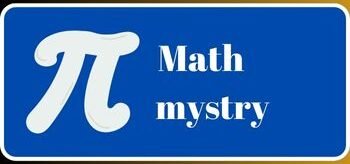Currently Empty: $0.00
Mathematics has always been the foundation of logic, structure, and problem-solving. But now, a powerful new force is reshaping the field—Artificial Intelligence (AI) and Machine Learning (ML). These technologies are not just helping solve long-standing problems but are also opening doors to discoveries that were once beyond human reach.
In this blog, we’ll explore:
How AI is influencing math research and education
Real-world examples of AI solving complex mathematical challenges
The changing role of mathematicians in an AI-driven world
Engaging ways to explore AI and math together
AI’s Role in Modern Mathematics
Machines That Prove Theorems
AI systems can now verify and even generate mathematical proofs with minimal human intervention.
AlphaGeometry (2024): Developed by Google, this AI solved 30 high-level geometry problems at the level of top International Math Olympiad participants.
Lean and Coq: AI-powered proof assistants help mathematicians verify complex theorems efficiently.
Uncovering Hidden Patterns
AI excels at analyzing vast datasets to detect mathematical relationships that might otherwise go unnoticed.
The Ramanujan Machine: Inspired by the famous mathematician, this AI generates new mathematical conjectures by identifying numerical patterns.
AI for PDEs: Neural networks can approximate solutions to partial differential equations faster than traditional methods.
Did You Know? In 2021, AI discovered a previously unknown formula related to π (pi) by analyzing large datasets of equations!
Hands-On AI & Math Exploration
Whether you’re a student, educator, or math enthusiast, here are some interactive ways to engage with AI-powered mathematics:
AlphaFold & Geometry: Learn how AI models like AlphaFold use geometric principles to predict protein structures.
TensorFlow Playground: Experiment with neural networks and see how they recognize patterns.
Adaptive Learning Apps: AI-driven platforms like Mathpid personalize math exercises based on your skill level.
Train Your Own AI Model: Build models that predict number sequences, such as primes or Fibonacci numbers.
Fun Fact: ChatGPT, the AI behind this conversation, relies on advanced mathematics—from linear algebra to probability theory. Its underlying technology, the Transformer model, is built on principles of calculus and optimization.
The Math Behind AI
Why Linear Algebra is Essential
Every machine learning model depends on linear algebra.
Data as Matrices: AI processes large datasets structured as matrices for efficient computation.
Key Operations: Matrix multiplication, dot products, and eigenvalues power everything from image recognition to language models.
Dimensionality Reduction (PCA): Principal Component Analysis simplifies data while preserving its key features.
Calculus: The Engine of AI Learning
Without calculus, AI wouldn’t be able to improve its predictions.
Error Minimization: Derivatives and gradients help models reduce prediction errors.
Backpropagation: This algorithm uses calculus to adjust neural network weights for better accuracy.
Gradient Descent: Like finding the fastest way down a hill, this method uses calculus to optimize solutions step by step.
Making Math Interactive & Creative
Ask AI for Custom Math Problems: Try prompts like, “Give me a challenging probability puzzle.”
Join AI-Based Math Competitions: Test your skills against AI-generated problems.
Explore AI-Generated Math Art: Discover stunning algorithmic designs, fractals, and geometric visualizations.
What’s Next for AI and Math?
The future holds exciting possibilities:
AI-Powered Peer Review: Faster and more accurate validation of mathematical research.
Quantum Machine Learning: Solving problems that were previously unsolvable.
AI-Generated Visual Proofs: Creating interactive 3D models and geometric representations.
Final Thoughts
We’re entering an era where human ingenuity and AI work hand in hand. Rather than replacing mathematicians, AI is becoming a powerful collaborator, accelerating discovery and creativity. The future of mathematics is not just about computation—it’s about innovation, exploration, and endless possibilities.
